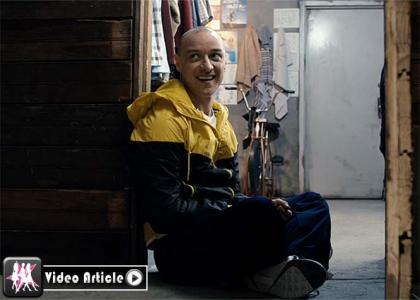In “Preggoland,” Ruth spends most of her time working at an off-brand Walmart and drinking out of a cellphone-shaped flask. She’s in her 30s and it seems like everyone around her is starting a family, while she still has few plans beyond being the speediest checkout girl. Her friends are growing tired of her antics and their feelings reflect that of modern audiences: while the man-child has flourished for decades, the female counterpart finds it near impossible to garner sympathy.
“Preggoland” star and writer Sonja Bennett didn’t think of her lead character as unlikable, but that was a note she got quite often in the path to production.
“They had said they really liked this movie, but from a financial point of view female anti-hero movies like ‘Young Adult’ had underperformed at the box office,” she told The Huffington Post of one studio that considered the film. “They thought those films were underperforming because they characters were unlikable.”
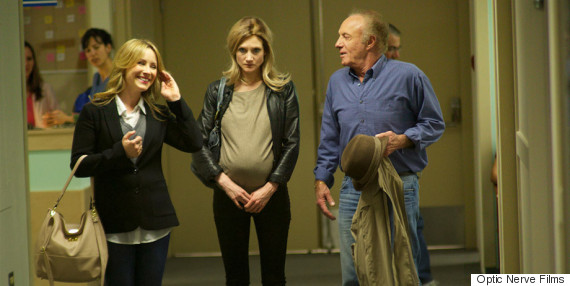
For female characters, likability is a nagging problem.
“Audiences who are not as used to it need something to root for with a groundless female character,” said “Bridesmaids” director Paul Feig. “We found that a bit of a challenge — how do we get people to stay invested in [Annie]?”
According to Feig, the key with Annie (Kristen Wiig) in “Bridesmaids” was establishing that she was a successful bakery owner before her life swerved off track. Otherwise, he wasn’t sure his audience would be able to sympathize with a woman who has no “socially redeeming” qualities.
“Classically, male characters have been able to get away with that more in the past,” he said. “There’s this weird thing ingrained in our culture that it’s no fun to watch a woman out of control. You know, versus with a guy out of control, where the idea is that’s just what they do.”

Annie from “Bridesmaids” and Ruth from “Preggoland” are just two recent embodiments of this “difficult” female character. There’s Mavis from “Young Adult,” Donna from “Obvious Child,” Jenny from “Happy Christmas,” Abbi and Ilana from “Broad City” and Hannah from “Girls,” to name a few more. They are all women in their 20s and 30s, experiencing a liminal period between adolescence and adulthood. Providing a prime example of the type, a Rolling Stone profile of Jenny Slate shortly following the release of “Obvious Child” described Donna as a “woman stumbling through bad sexual experiences, professional inertia, and small nervous breakdowns in a big city, and emerging on the other end with something like profundity in hand.”
The true meaning of the character, however, comes out most clearly in juxtaposition with the man-child. The sympathetic conundrum Feig experienced with Annie is a non-issue for the male version of the archetype. In comparing the two characters, the sexist double standards endured by women are only cast in sharper relief through the lens of prolonged childhood.

That out-of-control man-child counterpart has been around far longer. A brief history can be compiled from Adam Sandler’s IMDb page alone (“Mr. Deeds,” “Billy Madison,” “The Waterboy,” “Happy Gilmore”). Then, of course, Judd Apatow provides the modern update on extended adolescence (“Knocked Up,” “This Is 40,” pretty much everything he’s ever done). As Amy Nicholson wrote for LA Weekly, each film in the genre depicts a “misguided but inherently decent overgrown dude who would be a good guy if only someone would bother to make him, such as a girlfriend (‘The 40-Year-Old Virgin’), a hired girlfriend (‘Failure to Launch’), a father figure (‘Cyrus’), a sibling (‘Step Brothers’), a suicidal sibling (‘The Skeleton Twins’), a baby (‘Knocked Up’) [or] 533 babies (‘Delivery Man’).” In each of those cases, the protagonist has been led astray from a traditional path to adulthood, but their resulting antics — drinking a lot, general laziness and immaturity — are played for laughs and rarely, if ever, become dilemmas worthy of audience sympathy.

Things that are seen as funny with the man-child read as problematic in the hands of a woman. Substance abuse is a great example of the double standards at play. Extended adolescence almost always co-occurs with alcohol consumption. For a man-child, that means they burp and maybe pass out in silly position after five too many beers. For a woman-child, that means a toxic personality and potential alcoholism, evidenced by Jenny from Joe Swanberg’s lesser-known “Happy Christmas.”
Reeling from a breakup, Jenny (played by Anna Kendrick) comes to live with her brother, his wife and their newborn. She’s late, listless and lazy, getting blackout drunk at a party the first night she arrives. Initially, her behavior is amusing, though she morphs quickly into a portrait of a young woman spinning out of control.
“If you’re a female, then you should have your shit together and you should be figuring it out,” Anna Kendrick said, discussing the role. “With men it’s just like, ‘Oh, you know, he’s just still a frat boy at heart, and it’s no big deal.’”
For a particularly robust example, recall one of the earliest portrayals of the man-child: Frank (Will Ferrell) in “Old School.” “He’s a man with a house, but he’s still allowed to be farcically childlike,” said Jennifer Clark, a communications professor at Fordham University. “That seems like a viable representation, whereas it’s very difficult to flip the script and imagine a married woman who lives in a house in the suburbs acting in this infantile way.”
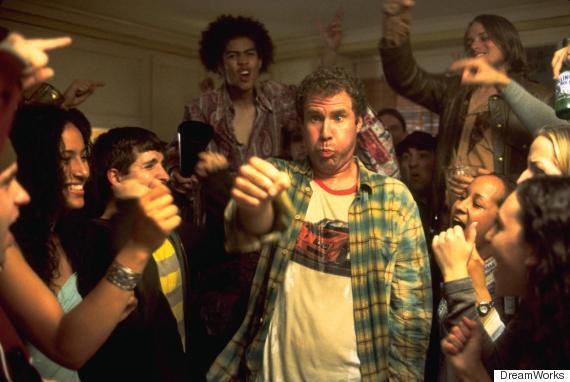
Something is set up as ostensibly wrong with the woman-child, while the male version is explained away with the idea that “boys will be boys.” “The difference between the man-child and the woman-child is that there is more of a sort of trauma associated with her,” Clark said.
Clark clarified that there is a spectrum of experiences we might refer to as “trauma.” Yet, what she hits on with that idea — that there is some problem in need of solving — rings true across the archetype.
With “Happy Christmas,” Swanberg thought of Jenny as a person struggling through “a weird period” that he didn’t see as uncommon for a man or woman her age, and yet he also encountered the issues of sympathy Feig dealt with in “Bridesmaids.” “It’s not something we see on screen with women as often, so the images are slightly more startling,” Swanberg said. “There’s such an adherence to likability based on the modern audience’s desire to not be made uncomfortable.”
In “Happy Christmas,” the “slightly more startling” image comes in the form of Jenny passing out after several glasses of whisky, leaving the oven on and nearly burning down her brother’s house.
By the end of the film, she hasn’t sworn off drinking, found a job or even clearly gotten over her ex. Her arc ends inconclusively.
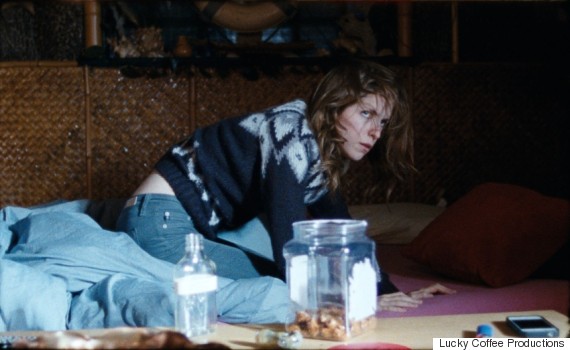
“Is this a phase or just how she’s destined to be?” Kendrick asked of the character. “I don’t know the answer to that question.”
Jenny is left in limbo, a strange space, considering film usually insists on redeeming its characters in 90 minutes or less. “It’s a tricky narrative arc to leave the character at the end of the movie in roughly the same place they started,” Swanberg added.
The woman-child is an archetype that doesn’t present a clear happy ending. In the Rolling Stone definition, author Carrie Bantan opted for a “sense of profundity.” It’s hard to signify that in any concrete way at the end of a movie.
“For women, happily ever after used to be the guy,” said Hilary Brougher, a film professor at Columbia University. “But one of the edgier things coming out of this is that happily ever after is almost a group of imperfect people who understand and support you.”
Heteronormative romance is no-longer the catchall resolution for female characters who have lost their way. Marriage is an option and love is an option, but the issues affecting these characters are not quite the sort that can be solved with a white dress.
Bennett struggled with pushback on the ending of “Preggoland.” Desperate to fit in with her clique of friends who are now all mothers, Ruth ends up faking a pregnancy. Her lie is revealed in a scene of masterful cringe-comedy, which garners laughs while peeling back layers for deeply painful look at Ruth’s desperation. In spite of that, a few studios encouraged the film to end with Ruth celebrating the fact that she is pregnant, this time with a real baby.
“I’ve been very flexible, because I’m a new writer, but that was just a non-starter for me,” said Bennett. “The message of this movie is not that when you’re a woman and you’ve got your shit together or become a better version of yourself that means you want to be married or have children.”
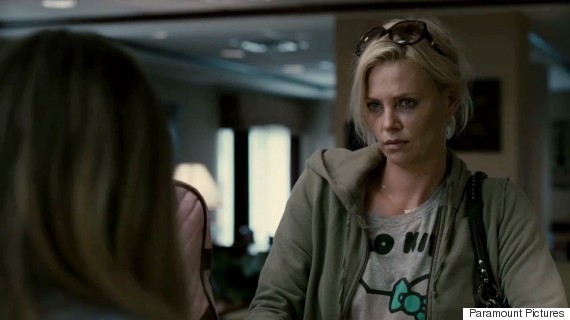
The ending is unclear because there is no clear ending for this state as it manifests itself in real life. “I think the kind of outlet for the contemporary woman-child is that there doesn’t seem to be any exit or even desire to exit this kind of liminal state, that is both economic and in terms of identity and maturity,” said Clark. “Marriage doesn’t seem to be the out anymore.”
The lack of marriage as “happily ever after” is part of what marks the woman-child as a new archetype. The more difficult or rebellious female characters of early films — “It Happened One Night” (1934) or “Midnight” (1939) — are screwball heroins whose behavior is defined in relationship to a man, though usually undermining his status.
“Screwball comedy heroines are much more powerful, subversive, and have much more strength and agency than, say, the characters in ‘Girls,’” said Bette Gordon, a film professor at Columbia with Brougher, who thinks it is important to differentiate between the two. “They constantly display much more anxiety, much more uncertainty. They are apologetic for what they’re doing, and I think that’s a very different thing.”
Instead, with the woman-child, there is usually a series of people who shape her journey. Resolution comes from building a sense of self through a community of people rather than just one man. Look at Hannah’s trajectory on “Girls.” She navigates a series of (often dysfunctional) relationships in this path to discovering herself. Her on-again, off-again boyfriend Adam is just one part of that journey. “Hannah isn’t becoming complete through a single man,” Brougher said. “She’s encountering a series of men and it’s rounding out her education. It’s not about one man, it’s about a journey through womanhood becoming complete.”

These characters are easier to explore on TV where incompleteness is required. But, in film, we can see the uneasiness associated with that lack of a concrete ending. Audiences want to show up to a film, like (or learn to like) a character and see their storyline tied up with a bow at the end of an hour and a half. That’s simply not possible with the woman-child.
And yet, this element of the character, seen as a weakness by major studios, is also the source of its power. Hannah, Annie and the rest give young women a chance to see a realistic representation of themselves on screen, and sort through the very real double-standards that pop up in comparison to the man-child.
There is an enduring expectation for women to “have their shit together,” as Kendrick so wisely put it. That’s true on screen and off, although real life leading ladies don’t have directors to help make them sympathetic. Ultimately, the rise of the woman-child across film and TV normalizes the messiness of this transitional time and helps remove the sexist stigma by which it is contextualized.
“I think that there are a lot of women who grew up with perfect rom-com leading ladies in the ‘90s, who are like, ‘Yeah, that’s not the way we see ourselves,’” said Jenny Slate, discussing her role as Donna in “Obvious Child.” “We see all of it, and want to show all of it, and we don’t want to be told that we can’t be leaders just because we’re lazy or we’re messy sometimes. Sometimes everybody is lazy and messy, and it’s okay.”

